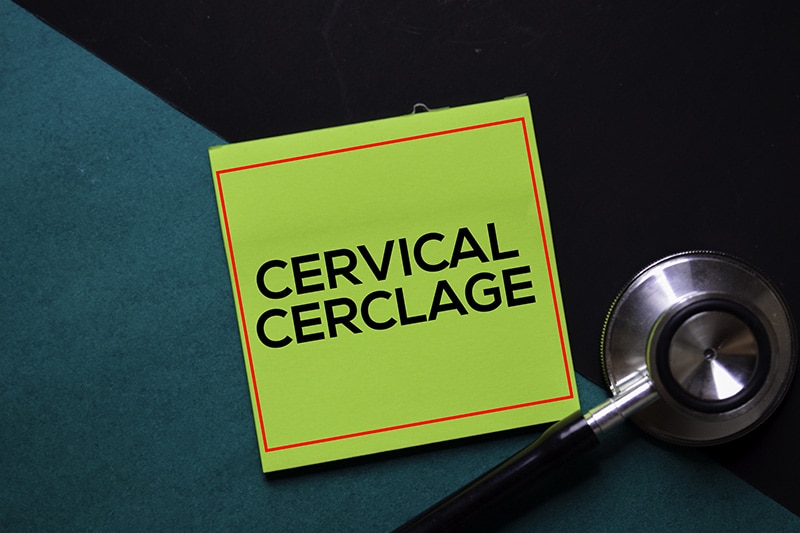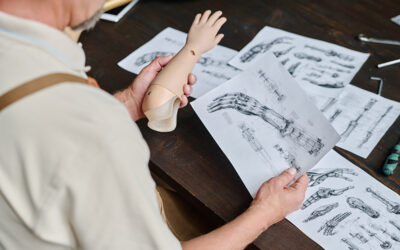Regarded as a common medical procedure performed for cervical insufficiency or incompetence, cervical cerclage (also called cervical stitch) holds the cervix closed during pregnancy. Typically, the cervix is a narrow canal that connects the lower part of the uterus to the vagina of the woman and allows the baby to exit during birth. It is a funnel-shaped tissue from where the baby comes out of the uterus and through the vagina during childbirth. The procedure is recommended for women in order to prevent late miscarriage or pre-term or premature birth during pregnancy when the cervix starts to shorten or open too early. For a woman who has a history of one or more late miscarriages, it is advisable to undergo the treatment in the first or second trimester of pregnancy. The procedure is performed at the surgical center or at a hospital; the patient can go home on the same day after the procedure. Obstetrician-gynecologists or other specialists involved in performing a cervical cerclage procedure need to correctly understand the usage of the procedure codes and their potential impact on patient care. Relying on the services of reputable medical billing companies with ample expertise in this field can help physicians ensure billing and coding efficiency.
Why Is a Cervical Cerclage Performed?
During pregnancy, a closed cervix keeps the baby inside the uterus until delivery. However, as the pregnancy progresses, the extra pressure on the cervix may cause it to open before the baby is ready to be born. A cervical cerclage can help a pregnancy reach full term, at least 37 weeks, by keeping the cervix closed.
Generally, cervical stitch is performed between 12-14 weeks of pregnancy and will remain in place up to the 24th week of your pregnancy until the risk of pregnancy loss or premature birth has passed. Physicians may remove the suture as the full-term due date approaches or if other indications arise. Cerclage may be done for women who are pregnant and have –
- Short cervical length
- Changes in the cervix during pregnancy that may lead to premature birth
- A history of early pregnancy losses
- A history of inflammation or infection
- A history of surgery or trauma to the cervix
- Structural abnormalities of the uterus
Potential complications or risks associated with the procedure are very rare. But, all procedures have some amount of risk. Physicians will review potential problems like –
- Preterm premature rupture of membranes (PPROM)
- Premature labor or birth
- Infection of the cervix or amniotic sac that protects the baby
- Trauma to the cervix or nearby structures
- Inability of the cervix to dilate during normal labor
- Another cerclage for future pregnancies
- Adverse reaction to anesthesia
Types of Cervical Cerclage
- Transvaginal Cerclage – There is no surgical incision involved in this type of cervical cerclage. Typically, performed during the 13th or 14th week of the pregnancy, the physician sews the cervix shut with a suture placed through the vagina. This method creates a “purse string” around the cervix, which helps reduce the risk of pregnancy loss. At about 37 weeks, the doctor removes the stitches so that a vaginal delivery is possible.
- Transabdominal Cerclage – In this type, the physician will make a small cut in the abdomen (tummy). The abdominal stitch is placed higher up the cervix than the transvaginal stitch, and provides a stronger physical barrier to keep the baby inside the uterus and prevent a woman from going into early labor.
- McDonald Operation – During the McDonald operation, the healthcare provider will use a needle to put stitches surrounding the outer part of the cervix. Then, the ends of the sutures are tied to close the cervix.
Getting Prepared for the Cervical Cerclage Procedure
Before the procedure, the physician may perform a detailed physical examination which includes a manual pelvic exam to assess the cervix for abnormalities, such as flattening or opening. Other tests like blood tests (to look for potential infections) and Transvaginal Ultrasound may also be performed to analyze the baby’s vital signs and rule out any major birth defects. In certain cases, the health care provider may take a swab of cervical secretions or do amniocentesis – a procedure in which a sample of amniotic fluid is removed from the uterus to check for infection. In case of any infection, a cerclage won’t be placed. Physicians may prescribe medications, antibiotics or other supplements if the patient has an infection. A day prior to the surgery (after midnight), the patient is not allowed to have any food or drink to avoid vomiting and nausea during and after the cerclage treatment. Physicians may advise the patient to abstain from sexual intercourse, use of douche or tampons 24 hours before the procedure. To administer fluids and medications, an intravenous catheter is placed.
Typically, cervical cerclage is performed as an outpatient procedure at a hospital or surgical center under regional or general anesthesia. Before the initial start of the procedure, medicines are given to the patient to numb the pain. Physician will administer either spinal anesthesia, regional (that covers the whole region of and near the cervix) anesthesia, or general anesthesia before the procedure. This helps patients remain pain-free throughout the surgery. There are two routes through which cervical cerclage can be performed. These include –
- Vaginal Route – This is the most commonly used approach for performing cervical cerclage. Performed on an outpatient basis, the procedure involves inserting an instrument through a speculum into the vagina and stitching the cervix by a band of thread. An ultrasound will be used to guide the doctor during the procedure.
- Abdominal Route – This approach is adopted if the vaginal route is unsuccessful or if the cervix suffers any injuries. Patients will be usually admitted for a day or two for this type of surgery.
After cervical cerclage, an ultrasound is performed to check the baby’s well-being. Patients may experience some spotting, cramps and painful urination for a few days. Acetaminophen (Tylenol, others) is recommended for managing pain or discomfort. If the physician used stitches to reposition vaginal tissue affected by incisions within the cervix, patients may notice passage of the material in two to three weeks as the stitches dissolve.
CPT Codes for Reporting Cervical Cerclage
Billing and coding for cervical cerclage can be challenging, as it involves several rules related to reporting the procedure accurately. Physicians administering the cervical stitching must use the relevant CPT codes to bill for the procedure correctly. The CPT codes for cervical cerclage include –
- 57700 – Cerclage of uterine cervix, non-obstetrical [cervical incompetence prior to conception]
- 59325 – Cerclage of cervix, during pregnancy; abdominal
Most women undergoing cervical cerclage can return home the same day after the procedure. Following cervical stitch, patients may experience mild cramping, light bleeding, and vaginal discharge. The doctor may recommend medicines to prevent preterm labor or infection. Also, two to three days of rest may be advised after cervical cerclage. Patients must avoid unnecessary physical activity and relax at home for 2 to 3 days after the procedure. Typically, the physician would remove the cervical stitch during the 37th week of pregnancy. Patients need to follow up at regular intervals (weekly or biweekly) to check the status of the cervix.
Obstetrics and gynecology medical billing and coding can be challenging. Physicians can rely on outsourced medical billing services to submit accurate claims. Reputable billing and coding companies provide the services of expert coders well-versed in the latest coding and billing guidelines.




